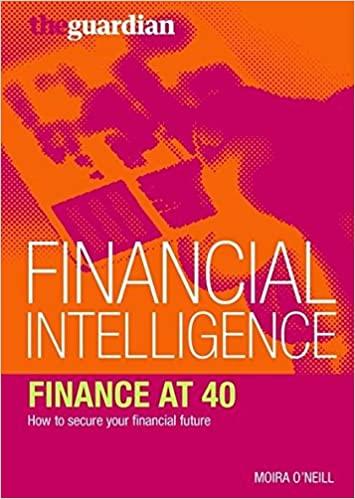Answered step by step
Verified Expert Solution
Question
1 Approved Answer
1. Married clients have just been approved for a 20-year, $150,000 mortgage. They have been given a choice of two loans. One loan has an
1. Married clients have just been approved for a 20-year, $150,000 mortgage. They have been given a choice of two loans. One loan has an annual percentage rate (APR) of 8% and does not carry a fee, and the other has an APR of 7.5% but carries a discount fee of 2% of the initial loan amount. The fee for the second mortgage is payable in cash at loan inception and cannot be financed with the loan. From a present value cost perspective, which loan is the better deal, assuming they sell their home immediately after paying the 120th payment and require a 9% effective annual rate of return? In other words, which option has the lower cost? Assume all required payments are made at the end of each month and that interest is compounded monthly. Remember to consider the difference in loan payment, the difference in remaining balance at the time of sale, and the present value of the discount points on an after-tax basis assuming the points are fully deductible. The clients are in the 25% marginal tax bracket. (Hint: You can solve this problem at either T0 or T120.) a. What is the difference in total interest payments made between the two alternative payment methods? Hint: The total of payment for Alternative 2 involves using the formula for the partial sum of a geometric series. 2. Suppose a client is in the market for a car. The client can afford to spend $500 per month, but she decides it is best to buy a cheap car now and use what is left of the $500 to save for a really nice one later. These savings will earn an effective annual rate of 9% interest. Suppose she decides to borrow $15,000 to buy a used car. The loan is for 48 months at a 7.8% APR. Three years later she sells this car for $4,500. How much money will the client have for her new car after paying off the old one assuming that all payments and compounding occurred on a monthly basis? (Do not consider sales or income taxes in the calculations.) 3. Married clients have just been approved for a 30-year, $150,000 mortgage, with an APR of 7%. However, they know that they do not want to make only the regular payment and that they do not want to take the entire 30 years to pay off the balance. So they have suggested two options they would like analyzed. Option 1 requires a fixed monthly payment of $1,200. Option 2 requires that they start with the regular payment but then increase that amount by an effective monthly rate of 0.35%. They want to know the answers to the following questions. b. Which payment method will result in a faster payoff? c. Which repayment method results in higher home equity (the lower loan balance) after 14 years? 5. Using the Butterfield case in Part VI of the text calculate and interpret the ratios. All needed information is provided, except for the total credit available, which is $10,000 on the Visa and $11,500 on the MasterCard. Then, answer the following questions based on your findings. Be sure to frame your answers as if you are speaking to or presenting them to the client. a. How would you rate the Butterfields
Step by Step Solution
There are 3 Steps involved in it
Step: 1

Get Instant Access to Expert-Tailored Solutions
See step-by-step solutions with expert insights and AI powered tools for academic success
Step: 2

Step: 3

Ace Your Homework with AI
Get the answers you need in no time with our AI-driven, step-by-step assistance
Get Started


